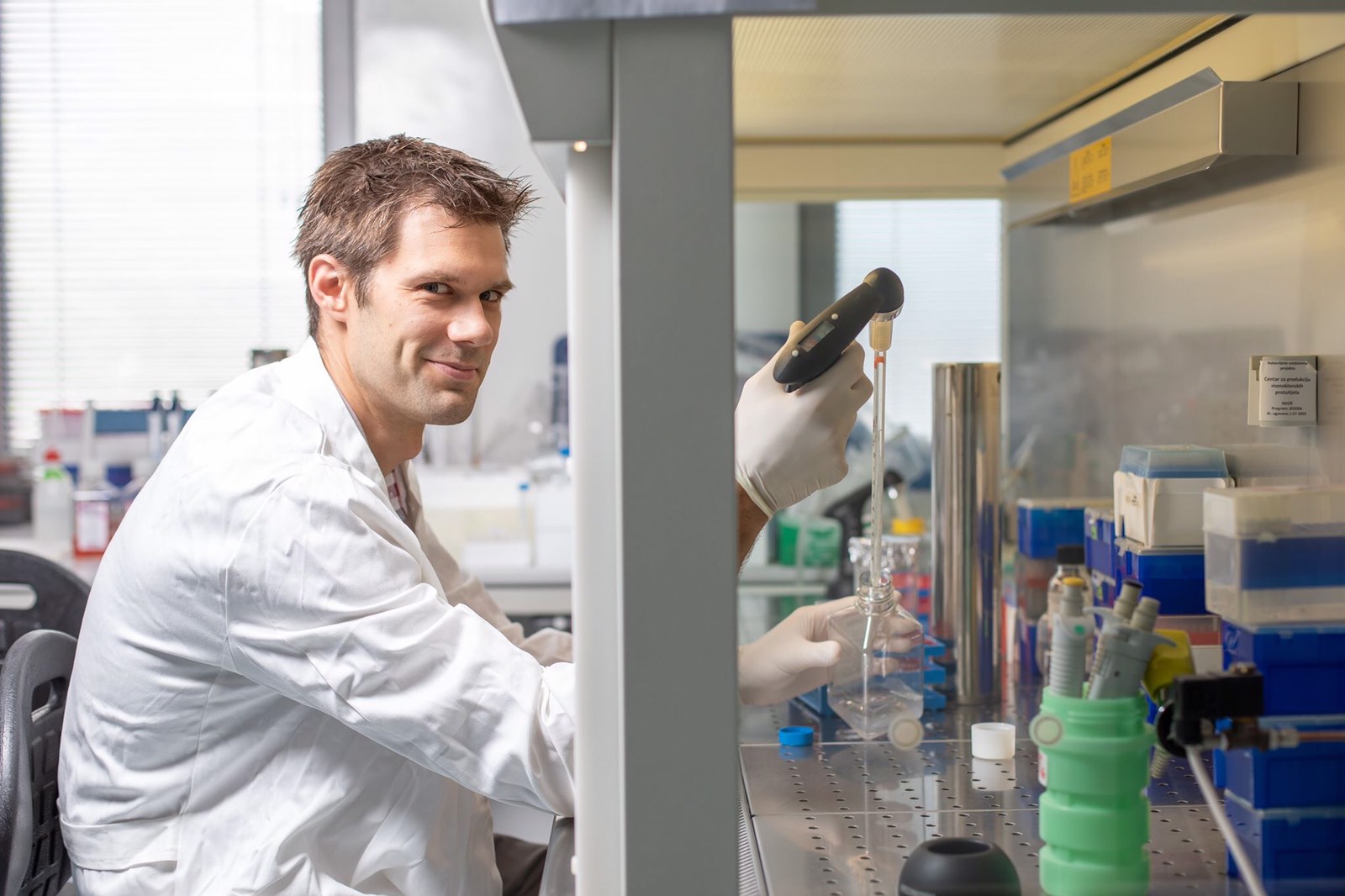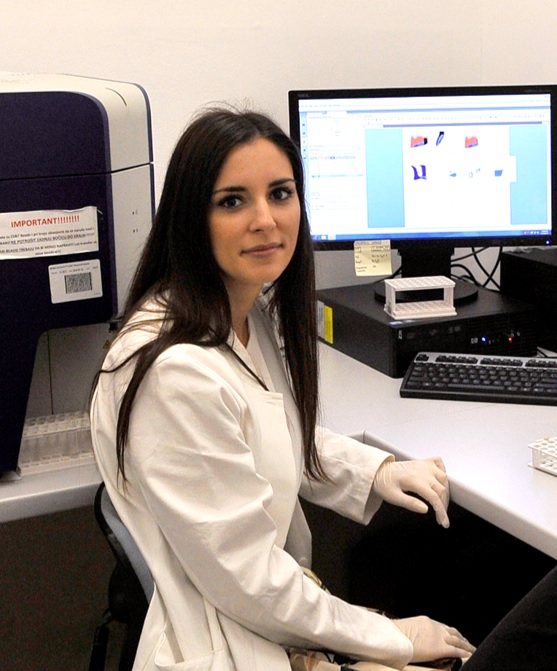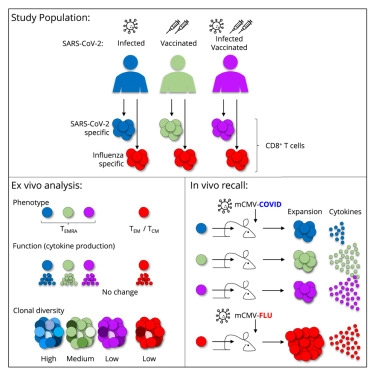Our immune system protects us against infection with pathogens such as bacteria and viruses. Moreover, after we have recovered from a disease, our immune system “remembers” the pathogen and responds better and more effectively upon reinfection. If the same pathogen enters our body again, we, therefore, do not get symptoms at all or they are much less severe. The immune system accomplishes this by forming dedicated “memory cells”, which rapidly expand after reinfection and secrete factors to eliminate the pathogen and infected cells. Our body has two types of immunological memory cells: B cells, which produce antibodies that neutralise threats outside of cells, and T cells, which recognise and eliminate threats inside cells. Vaccines work by generating memory T and B cells directed against a piece of a pathogen (an antigen) without the need of becoming sick by the actual virus.
In the recent COVID-19 pandemic, most people have formed immunological memory cells against the SARS-CoV-2 virus by infection or vaccination. Much attention has been given to the antibody response, but much less is known about T cell memory directed against this pathogen. The Croatian Science Foundation has, therefore, financed a research group from the Centre of Excellence in Viral Immunology and Vaccines in Rijeka specialised in T cell biology, led by Assoc. Prof. Felix Wensveen, PhD. This project was set up in collaboration with the team of Assoc. Prof. Đurđica Cekinović Grbeša, PhD from the Department of Infectious Diseases at the Clinical Hospital Centre Rijeka.
The goal of the Rijeka team was to investigate whether there are differences in T cell memory formed after SARS-CoV-2 infection, vaccination, or both. To do this, lead researcher Inga Kavazović isolated blood from people six months after last exposure to the viral antigen. She next analysed these cells in advanced genetic and functional assays. She observed that vaccination and infection induce memory cells of equal potency when you compare their functionality in a Petri dish directly after their isolation. She observed that the “diversity” of memory cells formed after infection is greater, which indicates that they have greater ability to recognise viral mutants. However, Dr. Kavazović argued that a Petri-dish analysis is too limited to understand the full potential of memory cells. She, therefore, developed a so-called “humanised” mouse model. Human memory cells were implanted in these animals and were subsequently infected with a virus carrying the SARS-CoV-2 antigen. She then discovered that memory cells formed after vaccination have a greater anti-viral functionality than cells formed after infection. Importantly, she could show that vaccination of people that had previously been infected increases the diversity of immunological memory and also increases their potency to the level of vaccination. This stresses the importance of booster vaccination.
This project was financed by the Croatian Science Foundation and almost all work has been done in Rijeka. It was only possible by combining the knowledge of the basic T cell research group of Assoc. Prof. Wensveen with the clinical skills and knowledge of the team led by Assoc. Prof. Cekinović Grbeša. It illustrates the success of translational science in Croatia. It has now been published as a pre-proof paper in the respectable journal Cell Reports:



